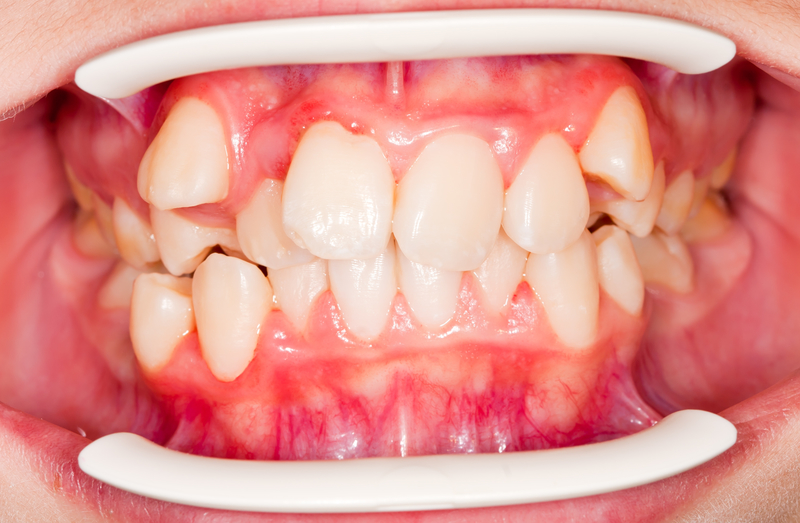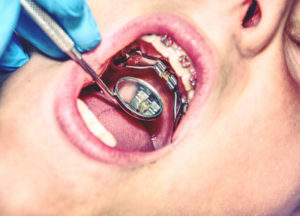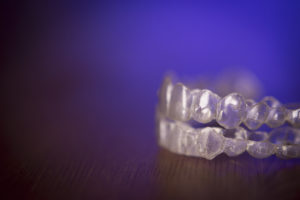How Upper Jaw Expansion Can Benefit Your Child

Upper jaw expansion is an orthodontic treatment that creates more space growth for developing kids by widening the circumference of the palate. This procedure helps correct crossbites, reduces overcrowding, and improves breathing ability. Most adolescents will receive this treatment before 16 years of age, but adults can also expand their upper jaw, if needed, as well. Read on to find out how upper jaw expansion works and what the advantages are with these tips!
Jaw Positioning and Malocclusion
Many patients deal with malocclusion, or crooked teeth and a poor bite. A poor bite refers to the way the upper and lower teeth line up, which is affected by the structure of the jaw. A “normal bite” consists of the upper teeth sitting slightly forward of the lower teeth, which allows for proper movement. Malocclusion is normally a cosmetic problem, but when it interferes with how teeth erupt, it can cause crooked teeth and tooth decay. A common cause of malocclusion is having too much or too little room in the jaw, which affects whether teeth grow in crowded or crooked. The shape and size of the jaw can also affect how severe someone’s malocclusion is, but thumb-sucking and tooth loss can also influence this process. For many patients, especially children, malocclusion is caused by a limited amount of space in the mouth for teeth to grow, so they either grow in crooked or the bite is altered. For this reason, many young dental patients receive upper jaw expansion treatments to allow more room in the mouth and prevent malocclusion. As more study and insight has been gained on the structure of the mouth, there are now more possibilities to fix incorrect bites, adjust occlusion and prevent crooked teeth starting from an earlier age.
Reasons For Upper Jaw Expansion
Upper jaw expansion is a specific treatment for widening the circumference of the palate to increase the perimeter of the dental arch in the mouth, which creates more space for teeth to grow. When there is enough room for teeth to grow, they are more likely to develop correctly. During childhood, palatal or maxillary expanders are used to aid this process. Through these expanders, dentists can help correct a crossbite that is caused by malocclusion. Normally, the upper teeth should close around the outside of the lower teeth, but when someone has a narrow palate, the opposite can occur and create a crossbite. As the upper teeth bite inside the lower teeth, an asymmetrical growth of the lower jaw can develop and change the symmetry of one’s face. This can cause serious complications if not addressed early on. Lastly, upper jaw expansion methods improve breathing ability, which is greatly affected by a narrow jaw. A narrow or deep upper jaw can make it difficult for a child to breathe through their nose and results in constant mouth breathing. While it doesn’t sound very serious, consistent mouth breathing keeps the mouth open at night, allowing for unfiltered bacteria to enter into the oral cavity, causing dry mouth and halitosis (bad breath).
Treatment Options
Upper jaw expansion is most successful when done at an earlier age while the mouth is still developing. For adults, those with a crossbite may only need a dental expansion instead of a palatal expansion, but may need surgery if palatal expansion is required to fix concerns. Depending on the age of the patient and the reason for treatment, a rapid palatal expander (RPE) may be used to increase the width of the jaw. The RPE is attached to the upper molars by bonding or cemented bands, and uses a special key that is used to widen the space by turning a screw in the appliance at certain points in time. This process puts extra pressure on the two halves of the upper jaw, which causes extra bone to grow between them. Gradually, by turning the screw with the key each day, the jaw widens to make room available for developing teeth. For adults, removable expanders can be used, as well, whenever the degree of expansion is minimal. Resembling a partial denture, removable expanders are typically made of chrome and recommended for adults as they more easily comply with treatment. After treatment, an orthodontic retainer may be given to maintain the space until all permanent teeth have developed. A third but least common option for expansion is a surgically assisted rapid palatal expander (SARPE), which is a combination of orthodontic treatment and surgery. This is used in the case that expansion cannot be achieved by the appliance alone. A custom appliance is made before surgery, and while during surgery, the upper jaw is intentionally fractured to separate it into movable sections. This allows the bone to grow between the fractures after the appliance is inserted.
Pros and Cons
Palatal expanders help straighten teeth, improve breathing and fix incorrect bites, but there are important suggestions to make note of. Since children are most likely to have one, a palatal expander, just like any orthodontic appliance, needs to be thoroughly cleaned each day to prevent plaque buildup and decay around the teeth. For young children, this can be difficult to do without help and can be easily overlooked, so parental supervision is essential. Additionally, the entire process can cost up to $3,000, depending on the degree of correction. For many, there is also some minor discomfort during expansion, but it is well worth it when you’re avoiding an inaccurate bite later in life.
For more information on which treatment option is best to fix yours or your child’s palate, call Belmar Orthodontics at (303) 225-9016! Our experienced team is dedicated to improving your oral health and getting you the smile that you deserve!
Does Your Child Really Need Braces?

We typically get our braces put on during our teenage to adult years, but how do you know whether your young child should have braces or not? Child orthodontics is a common practice for those children struggling with crooked, overlapping, or overcrowded teeth, or a misaligned jaw. There are many advantages for children as they receive braces earlier on in life as it can prevent future orthodontic treatment and guide incoming teeth into the proper position. Learn how to recognize whether your child needs braces through these tips!
When To Start
Young kids go through a lot of physical changes during adolescence, and some of those changes include jaw and teeth development. Orthodontics has become more and more common in young children to adjust certain orthodontic issues that occasionally occur as a child develops. Traditionally, orthodontic treatment begins once a child has lost most of their baby (primary) teeth and a majority of their permanent teeth have grown in, which typically occurs between the ages of 8 and 14. Even though braces is recommended at this age, it is a good idea to get an orthodontic evaluation for your child by the time they turn 7 years old; at this age, an orthodontist is able to detect early symptoms of orthodontic problems, such as an underbite or crossbite, which can cause severe complications and more treatment later on if left untreated at an early age. Bones are still growing during this age, so it is an ideal time to meet with an orthodontist to monitor bone and jaw development while evaluating any apparent orthodontic issues.
Advantages of Child Orthodontics
Although child orthodontics is only necessary if there are physical developmental issues within the mouth, receiving orthodontic treatment as a child has certain advantages. Visiting an orthodontist at an early age allows for observation of incoming teeth and reduces the risk of impacted teeth as your child loses their baby teeth and their permanent teeth take their place. As the orthodontist monitors your child’s teeth, they can help guide their teeth into the correct position as soon as they begin erupting, usually through braces or other orthodontic devices that help move teeth into the correct positions. Regular orthodontic visits also decrease the risk of hidden dental issues and permanent tooth extractions, as it allows for the orthodontist to adjust the jaw so that teeth crowding doesn’t occur.
Child orthodontics doesn’t always imply braces. Since a child’s jaw and teeth are still growing, many orthodontic issues, such as crowding, can be addressed before complications occur later on during adolescence. In this case, orthodontic treatment in young children is known as interceptive orthodontics. Many times, a child’s dental arch may be too small to fit all of their teeth. Just a few decades ago, it was a common practice to simply remove some permanent teeth to make space in the mouth. Now, though, child orthodontics can avoid this through the use of a palatal expander that expands the child’s upper dental arch, which allows adult teeth to emerge in a better position. Interceptive orthodontics can speed up the process of aligning teeth into the proper position and cause future treatment to be shorter and less involved.
How Much Does It Cost
If braces are fit too early on a child, treatment can take longer and be more expensive. For this reason, it’s important to have regular orthodontic visits to monitor tooth and jaw development to ensure that whenever your child receives braces, it’s at the correct time. The braces that your orthodontist recommends will depend on your child’s type of problem that he or she has. There are three types of braces that most children will receive, and they each have different advantages and disadvantages:
- Traditional metal braces – Have steel ties holding the wires between the brackets in place. Cost is driven by what your orthodontist will charge for treatment, including multiple office visits.
- Damon braces – Do not have steel ties, but the brackets themselves hold the wires in place. Typically more expensive and can cost up to $8,000, but you pay for less dental appointments since the braces are self-ligating.
- Invisalign (or other clear or removable aligners) – Fit over the child’s teeth similar to a mouthguard. Your child will receive a number of aligners during the duration of their treatment, so cost is determined by the amount of aligners needed to achieve correction.
Just like adult orthodontics, child orthodontics can cost anywhere between $3,000 and $8,000, depending on what level of correction your child needs. If your child needs to have teeth extracted or be fitted for other appliances, the cost will most likely go up, as well. The way your child complies to orthodontic treatment will also affect the cost. Make sure that they are brushing and flossing everyday so as to avoid tooth decay, which will increase the cost of treatment as your dentist will have to treat around the braces to fix the decay.
Is It Necessary?
As mentioned before, whether your child needs braces or not at an earlier age is dependent upon their mouth structure and how their teeth form. For more information about child orthodontics or if you’re interested in scheduling a consultation, contact Belmar Orthodontics at (303) 225-9016!. Our experienced and highly trained orthodontic staff offers a variety of orthodontic treatments and technology so that you can be confident your children are receiving the best care available.

